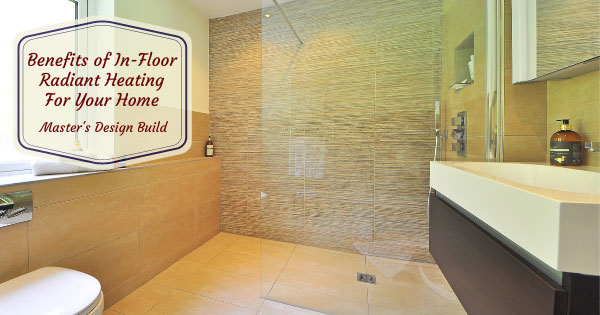In-floor radiant heating is by no means a new concept. While many have this type of supplemental heating in their home, the idea has been prevalent since before ancient Roman times.
The idea of getting out of bed or the shower and stepping onto a warm surface can be very appealing. Especially during those colder months.
Are you considering in-floor radiant heating as part of your new construction? Or perhaps including it in a renovation of some parts of your home? Either way, you should work with an expert home designer. They can help you understand the installation’s costs and benefits.
How Does In-Floor Radiant Heating Work?
The two popular forms of radiant floor heating systems are electronic and hydronic.
- Electronic Radiant Heating
Electronic radiant heating consists of wires, cables or a specially designed mesh beneath the flooring surface. These will warm the floor and space above as electrical current flows. The system is connected to the home electrical system with a thermostat to control the flow. Then an electrical current flows through a heat-conducting plastic material that transfers heat to the flooring. Additionally, sensors are incorporated within the floor to monitor temperature levels.
- Hydronic Radiant Heating
Hydronic radiant floor heating systems channel heated water through PEX (polyethylene) tubes embedded in the flooring. An adjacent hot water source heats the water first, then a pump circulates the liquid through the lines to warm the flooring and the room above.
Suitable water heating methods include conventional water heaters, geothermal, solar, or tankless hot water systems.
Will Radiant Heating Help?
Radiant heat can greatly help with the temperature of your home. Generally, hydronic in-floor radiant heating is more expensive to install since more parts are required and installation is more complicated. However, operating costs are usually lower with this option. Many people choose electronic in-floor systems when remodeling or retrofitting since they tend to be simpler to install.
Discussing the options with an experienced design build contractor will help you understand which system will suit you best.
Every conventionally heated home has some cold spots. Furthermore, we usually notice this in rooms with tile, vinyl, concrete, and uncarpeted floors. Most homeowners choose to install radiant in-floor heating in bathrooms, kitchens, and bedrooms. Another area to consider is rooms over unheated spaces like a garage or cellar.
Today homeowners often incorporate radiant in-floor heating systems throughout their home either during construction or when replacing the flooring.
Consider Radiant In-Floor Heating with Your Remodel
Master’s Design Build Group understands the value, and comfort that efficient in-floor radiant heating systems can provide. Whether a part of a renovation or an independent installation, you should work with experts before moving forward.
Master’s Design Build Group, based in Hatfield, PA, works with homeowners throughout Bucks and Montgomery Counties and surrounding areas to renovate their homes to enhance their value, functionality, and beauty.
The design-build process begins with a brainstorming meeting. We discuss the homeowner’s vision and potential modifications required to meet their objectives. Since the design build company performs all remodel functions from design to completion, homeowners can maintain clear, ongoing communication throughout the project.
Are considering upgrades for certain portions of your home or adding new space? Then you should discuss incorporating in-floor radiant heating systems with your design build specialist.
For more information about in-floor radiant heating systems, contact the professionals at Master’s Design Build Group. You can visit their website to view many stunning completed projects.
To learn more, complete the simple Let’s Talk information form on the Master’s Design Build website, and one of our design build specialists will contact you promptly.
Or, phone Master’s Design Build Group at 1-215-723-6162.





